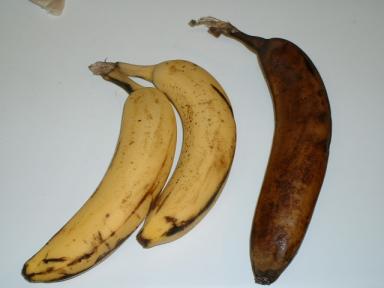|
|||||
|
|||||||
|
    An initiative of :Stichting Food-Info
|
| Food-Info.net> Questions and Answers > Food products > Fruits and vegetables Why do bruised or cut fruits (bananas, apples) get brown ?When fruits or vegetables are peeled, bruised or cut, enzymes contained in the plant tissue are released. In the presence of oxygen from the air, the enzyme polyphenol oxidase (PPO, phenolase) catalyzes one step in the biochemical conversion of plant phenolic compounds (such as the colours in apple peel) to brown pigments known as melanins. As the reaction is catalysed by the PPO enzyme, this reaction is known as enzymatic browning.  (Source) Enzymatic browning can be a significant problem, limiting the shelf life of many fruits and vegetables which have had little heat applied during processing. However, enzymatic browning is not always unwanted. The browning reaction contributes to the desirable colour and flavour of raisins, prunes, coffee, tea, and cocoa. For tea and cocoa the browning process is wrongly named fermentation, but in fermentation reactions micro-organisms are involved, which does not happen with enzymatic browning. Although enzymatic browning causes changes in flavour and taste (bitter, astringent), and may reduce quality, the melanins formed are not toxic. Brown fruits are safe to eat for some hours after cutting. Several factors influence the reaction and can be used to prevent the browning of fruits in for example salads:
On the other hand, the presence of iron or copper can increase the rate of the reaction. This can be easily observed when fruit is cut with a rusty knife or mixed in a copper bowl. More on enzymatic browning.
|
|
| ||
| Food-Info.net is an initiative of Stichting Food-Info, The Netherlands | ||||||